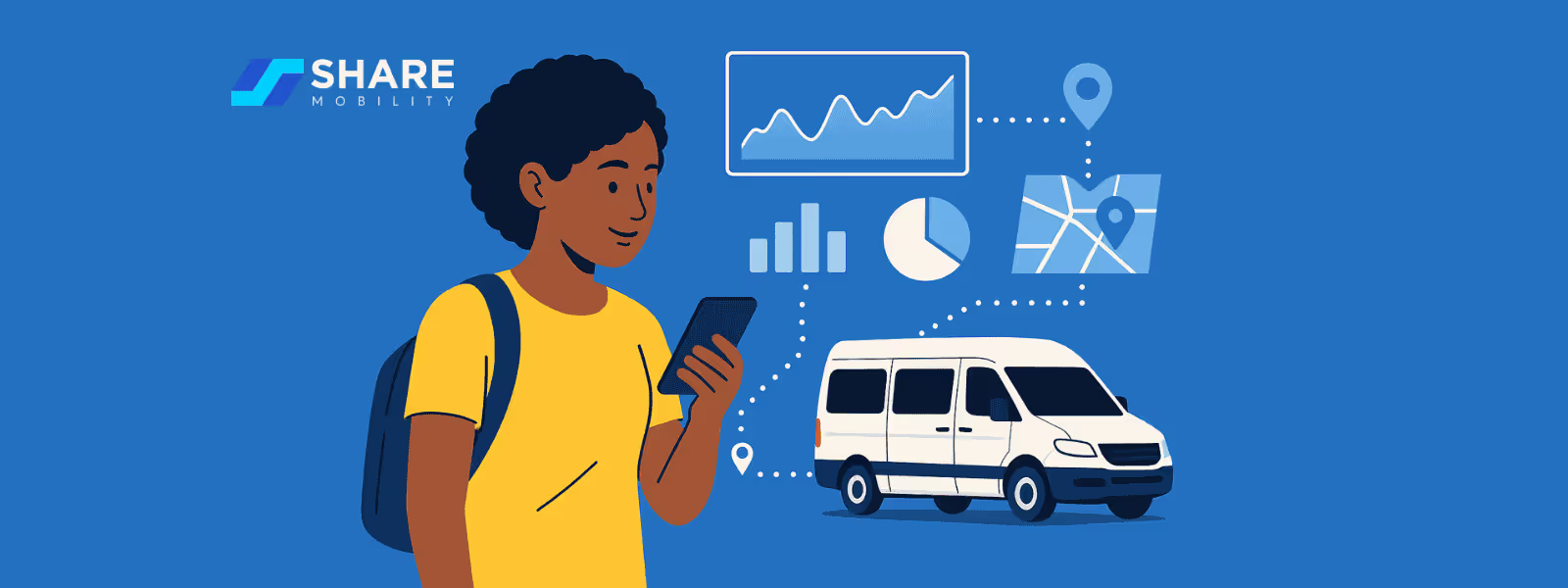3 Key Success Metrics For Your Transportation Company

Tracking key performance indicators (KPIs) is vital when you're trying to optimize operations and improve service reliability for your transportation company. Metrics like ridership, no-shows, and on-time performance don't just provide critical insights into your operations' efficiency, customer satisfaction, and overall performance. Each of these data points also affects ridership — for example, unreliable transit and poor on-time performance correlate with reduced ridership when people choose other forms of transportation.
If you want to reduce operation costs, lighten the workload for your team, and improve ridership, consider new software tools that deliver the real-time data needed to track and improve these critical metrics effectively.
1. On-Time Performance
When riders consider transit reliability, researchers have found that they're typically talking about specific things:
- Total travel time
- Arrival time
- Waiting time
- Departure time
- Boarding time
- Seat availability
- Missed connections
- Commitment to the scheduled time before the trip
It's no surprise that many transit systems struggle with on-time performance in some or all of these areas. Riders can feel the effects, whether they're waiting for a late shuttle or stuck in unexpected traffic congestion with no warning from the transit operator.
Take Pittsburgh as an example, which is one of North America's busiest hubs for transit. The city found that public transit was on time only 60-80% of the time, noting that it's "fairly common for most transit to be late." However, without real-time data, transportation companies can't identify when and where these delays are occurring—highlighting the need for better tracking and proactive solutions.
How Software Can Help Improve On-Time Transit Performance
Tools like SHARE Mobility’s software improve on-time transit performance by harnessing real-time data, predictive analytics, and automated scheduling tools that help transit operators like you to optimize their services. That includes real-time tracking, where operators can monitor vehicle locations in real time, allowing you to address delays proactively. Case in point: if a vehicle is running behind schedule, your dispatchers can make adjustments or communicate with drivers to mitigate further disruptions.
Speaking of adjustments, consider using a tool that also offers AI-driven route optimization. For example, SHARE Mobility's AI-backed platform takes traffic conditions, historical performance, and rider demand into account to create the most efficient and effective schedules.
2. Ridership Demand
Forecasting demand is one of the most important factors for improving ridership. There are many real-time data points that affect increased or decreased demand, such as traffic congestion.
Tracking ridership demand provides valuable insights into service efficiency, growth potential, and resource allocation. When you can analyze the total number of passengers over a specific period, you can gauge service demand, identify trends, and plan for future expansion. High ridership numbers indicate strong demand and may justify:
- Additional routes
- Increased frequency
- Larger vehicles
In contrast, declining ridership can signal issues like inefficiencies, poor service quality, or changing commuter behavior. However, these patterns only come clear when you're harnessing that data effectively—ideally, using software that predicts ridership fluctuations like peak hours, seasonal variations, and demographic trends in real-time.
This data-driven approach improves cost management, reduces operational waste, and enhances the overall rider experience by aligning services with actual needs.
How Software Can Help Predict Demand
Choose a tool like SHARE Mobility that offers built-in predictive analysis. For optimal KPI tracking, you need to be able to analyze past transit performance data and thereby predict trends and potential problem areas. This allows you to anticipate delays and implement strategies—such as adjusting departure times or modifying routes—to improve punctuality, seat availability, and more.
3. No-Show Rates
Your average no-show rates directly impact efficiency, operational costs, and service reliability. The percentage of booked passengers who don’t show up may indicate underlying issues such as scheduling inefficiencies, rider dissatisfaction, or lack of rider accountability. High no-show rates also lead to wasted resources—for instance, empty seats on vehicles mean underutilized capacity, increased fuel and labor costs, and inefficient route planning.
Analyze these trends regularly to identify patterns. For instance, are there certain times of day or specific routes where no-shows are more common? This allows you to adjust your operations accordingly (e.g., implementing reminder notifications and allowing flexible scheduling to mitigate the issue).
How Software Improves No-Show Rate Percentages
With tools from SHARE Mobility, you can track no-show rates as they happen, help identify causes, and implement strategies to optimize efficiency while maintaining a high level of service reliability.
Studies have found that one factor of no-shows is the unpredictability of when a ride will show up. With SHARE's rider app, passengers can see real-time vehicle tracking, minimizing uncertainty and reducing instances where riders are unprepared to board (which contributes to no-shows or canceled rides).
Level Up With More Metrics
On-time performance, ridership demand, and no-show rates are the crux of many transportation operators' woes. But those aren't the only KPIs to track if you want to optimize your system performance, reduce team burnout, and improve both ridership and rider satisfaction.
Keep an eye out for systems that offer these illuminating data points:
- Capacity utilization
- Costs and revenue per rider
- Overall customer satisfaction, such as by using a net promoter score (NPS) and customer surveys
- Operation costs, including fleet maintenance costs
- Environmental impact patterns, especially because carbon footprint tracking and green energy are front-of-mind for both businesses and riders
- Variations in transit time, including service coverage and system-wide alerts notifying riders if there's a disruption in the system (i.e., poor weather or a road closure)
- Trip completion rate, which gives you eyes on operational continuity and service reliability.
Turnkey Software For Your Transit Operations
There are many platforms that offer ridership management, but only one that also offers in-depth data tracking—and more importantly, data analysis, so you can turn those insights into actions. SHARE Mobility’s software helps you use these KPIs to minimize delays, improve reliability, and enhance overall service efficiency, ultimately leading to higher customer satisfaction and reduced operational costs.
Get started immediately with SHARE Mobility's cost-effective, AI-powered transportation management software. This turnkey solution includes dynamic routing, rider demand prediction, and so much more. Book a call with our team today!







